#João Fiadeiro
Text
Genèse des œuvres (vidéo en ligne)
2018 - Réalisateur-rice : Plasson, Fabien
Chorégraphe(s) : Cherkaoui, Sidi Larbi (Belgium) Lambert, Fabrice (France) Quaglia, Rita (Italy) Gallotta, Jean-Claude (France) Kelemenis, Michel (France) De Keersmaeker, Anne Teresa (Belgium) Monnier, Mathilde (France) Brown, Trisha (United States) Fiadeiro, João (Portugal) Wolliaston, Elsa (France) Touzé, Loïc (France)
Auteur : Centre national de la danse
"Pour la chorégraphe Mathilde Monnier, « au début d’un projet, on devrait juste avoir à écrire : “Voici les désirs, l’état des désirs de ce projet…” On devrait juste décrire un espace, une idée, donner des notes en désordre, un carnet de notes, une image, ou décrire un mouvement, un paysage, donner quelque chose d’opaque, en pagaille… » [1]. Et pourtant, quoi que l’artiste ait pu dire de la genèse de son projet, prévient-elle, « ce que vous lisez dans la note d’intention n’est en aucun cas ce que vous verrez. »
De fait, un spectacle de danse se crée généralement en plusieurs étapes qui se situent entre le moment où s’énonce un désir initial qui lance le projet, et celui de la première représentation. Quel est, au juste, le point de départ d’une œuvre chorégraphique ? Qu’est-ce qui donne envie à un artiste de commencer un nouveau projet pour s’y consacrer ensuite pendant plusieurs mois ?
Le déroulement du processus de création varie sensiblement selon les chorégraphes. Et, en danse contemporaine, le choix du processus à mettre en œuvre fait partie intégrante de la création. Selon les artistes, les différentes étapes (conception, structuration, répétitions) se chevauchent, se suivent ou se confondent. Elles n’ont pas forcément la même importance. Pour certains, la phase de la conception sera déterminante, tout comme l’idée de départ. Pour d’autres, ce sera celle des répétitions et les principes mis en œuvre dans le temps d’élaboration en studio du spectacle.
Le travail avec les danseurs joue parfois un grand rôle dans la structuration d’une œuvre ou, au contraire, permet surtout de concrétiser ce qui a été décidé en amont par le chorégraphe. Enfin certaines propositions, notamment dans la « composition en temps réel » ou dans l’improvisation, s’appuient sur l’élaboration de la chorégraphie devant les yeux des spectateurs.
Ce sont quelques-unes de ces différentes modalités de « genèse » des œuvres que propose d’explorer ce Parcours."
[1] Mathide Monnier, Jean-Luc Nancy, Allitérations – Conversations sur la danse, Galilée, 2005 p. 75 et 76.
0 notes
Photo
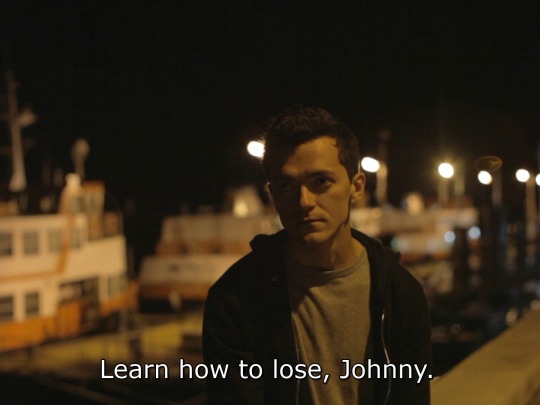

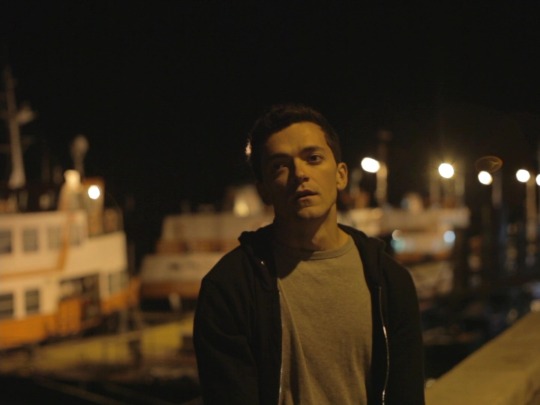

António Um Dois Três [Antonio one two three] (Leonardo Mouramateus - 2017)
#António Um Dois Três#Antonio one two three#2010s cinema#Leonardo Mouramateus#Mauro Soares#Deborah Viegas#Daniel Pizamiglio#João Fiadeiro#cinema of Portugal#Lisboa#Portuguese cinema#Portuguese movies#European movies#European cinema#European society#Lisbona#Lisbon
8 notes
·
View notes
Photo

João Fiadeiro, “I Was Here” performance
54 notes
·
View notes
Text
33rd and Last of King of Portugal (13th and last of the Bragança Dynasty): King Manuel II of Portugal, “The Patriot/The Unfortunate”
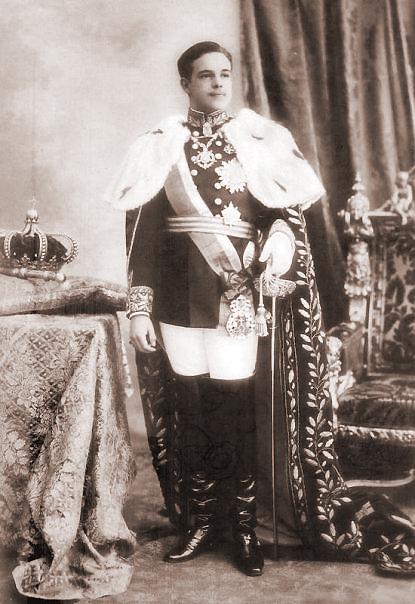
Reign: 1 February 1908 – 5 October 1910
Acclamation: 6 May 1908
Predecessor: Carlos I
Manuel II (15 November 1889 in Lisbon – 2 July 1932 in London), "the Patriot" ("o Patriota") or "the Unfortunate" ("o Desventurado"), was the last King of Portugal, ascending the throne after the assassination of his father, King Carlos I, and his elder brother, Luís Filipe, the Prince Royal. Before ascending the throne he held the title of Duke of Beja. His reign ended with the dissolution of the monarchy in the 5 October 1910 revolution, and Manuel lived the rest of his life in exile in Twickenham, Middlesex, England.

Manuel Maria Filipe Carlos Amélio Luís Miguel Rafael Gabriel Gonzaga Francisco de Assis Eugénio de Saxe-Coburgo-Gota e Bragança was born in the Palace of Belém, Lisbon, less than a month after his father King Carlos I ascended the Portuguese throne. He was the third child and second son of Carlos and Amélie of Orleans.
A member of the House of Bragança, he was baptized a few days later, with his maternal grandfather as godfather. The former Emperor Pedro II of Brazil,
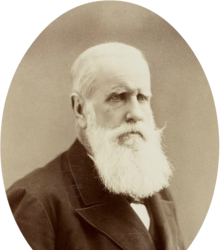
Manuel II's paternal great-granduncle, who had been deposed from the Brazilian throne on the day of Manuel's birth, attended the ceremony.
He received the traditional education of a member of the royal family, without the political preoccupations that befell his older brother, who was destined to become King.
Although Manuel was raised as a member of the upper class he took a more populist tone after ascending to the throne, and abandoned many of the court protocols. He studied history and languages, and by the age of six spoke and wrote French. He demonstrated a love of literature and reading, unlike his older brother who was more interested in physical activities. Manuel's upbringing included horse riding, fencing, rowing, tennis and gardening. He was a great lover of music, especially Beethoven and Wagner, and played the piano.
As a child, Manuel played with the children of Count of Figueiró, Count of Galveias and with other families of the Court.

In 1902, he was taught Latin and German by Franz Kerausch, later instruction was by Father João Damasceno Fiadeiro (Portuguese history); Marquês Leitão (Mathematics); M. Boeyé (French and French literature); Alfredo King (English and English literature), Father Domingos Fructuoso (Religion and Morals) and Alexandre Rey Colaço (piano).
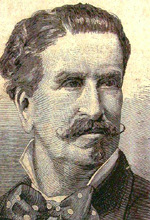
In 1903 he traveled with his mother and his brother to Egypt, on board the royal yacht Amélia,
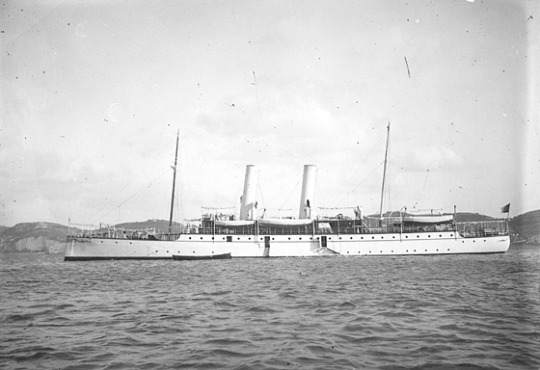
to expand his understanding of ancient civilizations. In 1907 he entered the Portuguese Naval Academy.

His future in the Portuguese Navy was abruptly shelved on 1 February 1908. On that day, the royal family returned from the Ducal Palace in Vila Viçosa to Lisbon. On their way to the royal palace, the carriage carrying King Carlos and his family passed through the Terreiro do Paço where shots were fired by at least two Portuguese republican activist revolutionaries: Alfredo Luis da Costa and Manuel Buiça. It is unclear whether the assassins were attempting to kill the King, the Prince Royal or the prime minister, João Franco.

The murderers were shot on the spot by the royal bodyguard and were later recognized as members of the Portuguese Republican Party. The King was killed; Prince Luís Filipe was mortally wounded; Manuel was hit in the arm; Queen Amélie of Orleans was unharmed. It was Amélie's quick thinking that saved her youngest son. About twenty minutes later, Prince Luis Filipe died, and Manuel became King of Portugal. The young King, who had not been groomed to rule, sought to save the fragile position of the Bragança dynasty by dismissing João Franco and his entire cabinet in 1908. The ambitions of various political parties made Manuel's short reign a turbulent one. In free elections held on 28 August 1910, the republicans won only 14 seats in the legislature.
His first act was to meet with his Council of State and request the resignation of João Franco, whose policies may have been responsible for the tragedy. He appointed a government of national unity, presided over by Admiral Francisco Joaquim Ferreira do Amaral.

This quieted the republicans, but in retrospect was seen as weakness.
He opened the Royal Court Assembly on 6 May 1908 in the presence of national representatives, and affirmed his support of the constitution. The King received general public sympathy, due to the deaths of his father and older brother. He was protected by his mother, Amélia, and sought out the support of the experienced politician José Luciano de Castro.

Judging that the intervention of King Carlos was a reason for the events of 1908, he declared that he would reign, but not govern.
For his part, the new King tried to increase the monarchy's connection with its subjects. The King visited several areas of the country. His trips included stops in Porto, Braga, Viana do Castelo, Oliveira de Azeméis, Santo Tirso, Vila Nova de Gaia, Aveiro, Guimarães, Coimbra and Barcelos. During these visits, his subjects were captivated by the young king, and he was received warmly. On 23 November he traveled to Espinho in open the Vale do Vouga Railway. On his journeys, he ingratiated himself with the people with his candor and pious character.

However, he was not popular with republicans. One of them, João Chagas, the anti-monarchist journalist and propagandist of the Republican Party, warned the King of the problems that would develop when he declared:
"...your Highness arrives too young into a very old world...!"
During the 19th century, many intellectuals and politicians were preoccupied with the growth of the urban proletariat as a consequence of the Industrial Revolution. In Portugal, owing to lower levels of industrialization, this was not an important question, but it was exacerbated by an economic crisis and the Republican Party, who believed a republic would resolve the problems. This was the Questão Social (social question) of the times.
The Socialist Party had existed since 1875, but it never had representation in Parliament. This was not only because it was not popular, but also because the Republican Party was the principal channel of radical discontent within the political system. The King made some moves that did not infringe his constitutional restrictions, but which created incentives for the Socialist Party to lessen their support for the Republican Party. In 1909, Manuel invited the French sociologist, Léon Poinsard, to examine the social environment and report back to him. Poinsard wrote that the only way to combat clientelism, created by the system of rotational governments, would be a reorganization of the local administrations. Enthusiastically, the King wrote to the President of the Council of Ministers Wenceslau de Sousa Pereira de Lima, to make him aware of the reorganization of the Socialist Party (under Alfredo Aquiles Monteverde) and to remind him of the importance of working with the Socialists, "...so that, we will empty their supporters from the Republican Party, and orient them into a useful and productive force."
Notwithstanding the contacts made by the government of Artur Alberto de Campos Henriques with the Socialist Azedo Gneco, Venceslau de Lima considered this difficult after the Congresso Nacional Operário, which was boycotted by anarchists and republicans. For their part, the Socialists were enthusiastic about Royal support between Manuel and Aquiles Monteverde. Monteverde would later inform the King of the failure of the October 1909 trade union congress, but little was formalized between the socialists and the government, although they supported the work of Poinsard. During the government of António Teixeira de Sousa,
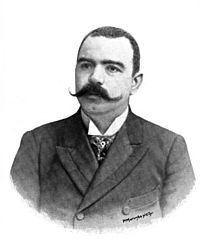
in July 1910, that the government created a commission to study the establishment of an Instituto de Trabalho Nacional ("Institute of National Work"), that had three socialists and included Azedo Gneco. However, Aquiles Monteverde would complain that the commission lacked the resources to be effective: specifically that permanent members and unlimited transport, in order for the Socialists to promote their propaganda. Manuel II informed the government, through the Minister of Public Works, that he agreed with the establishment of the Instituto de Trabalho Nacional, but by September, it was too late for the constitutional monarchy.
During his reign he visited many parts of northern Portugal, in addition to Spain, France, and the United Kingdom, where he was appointed Knight of the Order of the Garter, in November 1909. He cultivated a foreign policy that was close to Great Britain, which was not only the geo-political strategy that his father maintained, but it also reinforced his position on the throne by having a strong ally. The court also considered the marriage of a King of the House of Bragança to a British princess would secure the protection of the United Kingdom in any impending conflict. But, the country's instability, the assassination of the King and Prince Royal, and the drawn-out negotiations that were ended with the death of Edward VII,
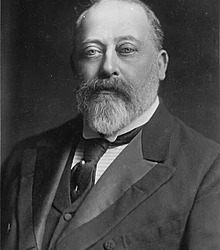
ended these pretensions. The old British monarch, a personal friend of Carlos, would have been the great protector of the House of Bragança, and without him, the liberal government of Britain had no interest in maintaining the Portuguese monarchy.
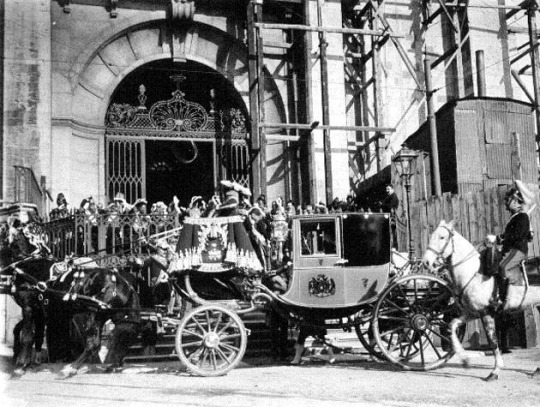
The stability of the government deteriorated; seven governments were established and fell in a period of 24 months. The monarchist parties continued to fragment, while the Republican Party continued to gain ground. The legislative elections on 28 August 1910 had elected 14 new representatives (resulting in an assembly that was divided: 9% Republican, 58% Government and 33% Opposition) which helped the revolutionary cause, but which made little importance since the Setúbal Congress (on 24–25 April 1909) had determined that the Republicans would take power by force. The murder of a prominent republican precipitated the coup d'état that had been so long in coming.
Between 4 and 5 October 1910, the Republican Revolution erupted in the streets of Lisbon. What started as a military coup commenced by soldiers, was joined by some civilians and municipal guards attacking the loyal garrisons and the royal palace, while the guns from the cruiser NRP Adamastor added to the cannonade. The Palace of Necessidades (then official residence of the young King) was bombarded, forcing Manuel to move to the Mafra National Palace, where he rendezvoused with his mother, Queen Amélia, and his grandmother, the Queen Mother Maria Pia of Savoy. There was little apparent popular reaction to these events: pictures from the square in front of the City Hall in Lisbon, where the declaration of the Republic occurred, did not show an overwhelming multitude, and even some in the military were fearful that their actions would not be successful. One republican commander, Admiral Cândido dos Reis, even committed suicide when he believed that the events had not succeeded.
One day later, once it was clear that the Republicans had taken the country, Manuel decided to embark from Ericeira on the royal yacht Amélia IV for Porto,

with armed Republicans arriving as the ship departed. It is unclear whether his advisers motivated Manuel to change his intentions or whether he was forced to change his destination en route, but the Royal Family disembarked in Gibraltar shortly later, after they received notice that Porto had fallen to the Republicans. The coup d'état was complete, and the Royal Family departed for exile, arriving in the United Kingdom, where he was received by the King.
During a visit to Paris in July 1909, the King met Gaby Deslys,

an actress and dancer, and immediately began a relationship that would last until the end of Manuel II's reign. It was thought that after this first meeting the King sent Deslys a pearl necklace worth $70,000: more gifts soon followed, including a diamond necklace with black and white pearl drops set in a platinum band. Their relationship was anything but discreet (she would arrive before night at the Palácio das Necessidades and would pass through Portugal unnoticed); abroad, meanwhile, they were on the front pages of newspapers in Europe and North America, especially after he was deposed. In public interviews, usually on trips, Gaby Deslys never negated the obvious, but always refused to comment on her relationship with the King. After his exile, they would continue to meet, especially while she had stage engagements in London. When Gaby moved to New York, in the summer of 1911, their relationship broke off.
In the spring of 1912, Manuel visited Switzerland, where he met Princess Augusta Victoria of Hohenzollern (1890–1966), and was deeply impressed by her. They were second cousins, both being great grandchildren of Ferdinand II of Portugal. In the following year, on 4 September 1913, Manuel married Princess Augusta Victoria, daughter of William, Prince of Hohenzollern. During the mass, which was celebrated in the Chapel of Sigmaringen Castle,
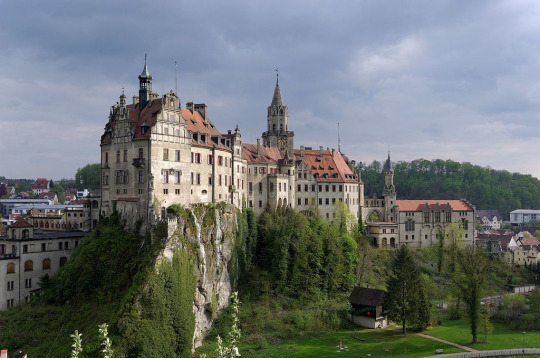
Manuel, wearing his Order of the Garter medallion and the sash of the Three Portuguese Orders, stood on a crate containing soil brought from Portugal.

The ceremony was conducted by Cardinal José Neto, Patriarch of Lisbon, then exiled in Seville, who had baptized Manuel as a young prince; Manuel was also assisted by the Prince of Wales (Edward VIII)

and King Afonso XIII of Spain,

as well as representatives of the royal houses of Europe (including Spain, Germany, Italy, France and Romania, in addition to the principalities and German kingdoms). After festivities which lasted two days, the couple went on their honeymoon to Munich, where the Princess fell ill and withdrew from the public. The marriage, a calm and serene union, lasted until the death of the former King; the couple had no children.
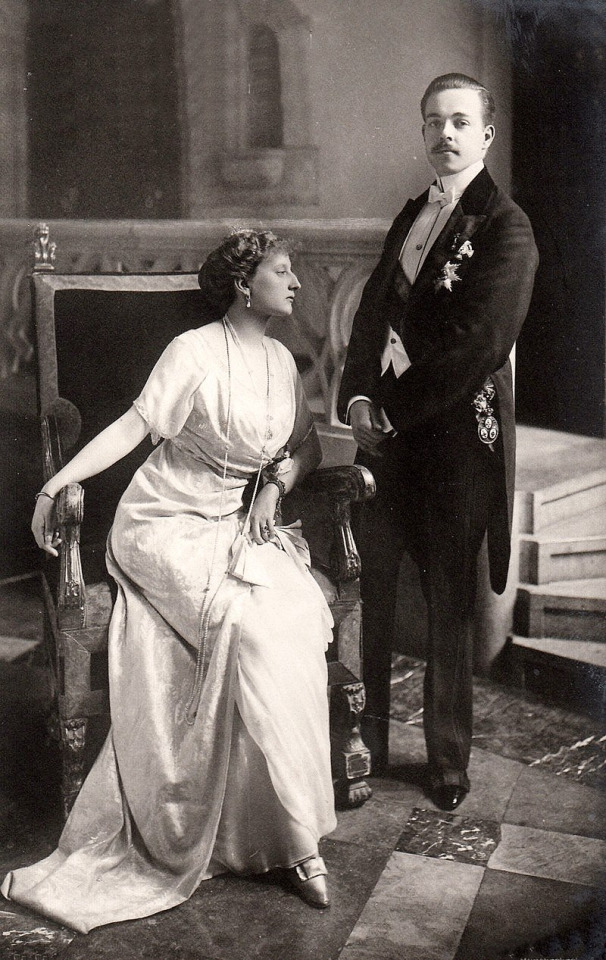
In exile, Manuel resided in Fulwell Park, Twickenham now in London (where his mother had been born). At Fulwell Park he tried to recreate a Portuguese environment, as the attempts to restore him to his throne (1911, 1912 and 1919) failed. He was active in the local community, attended services at the Church of St James, Twickenham, and became godfather to several children. In 1932 he donated a window to St James Church bearing the Bragança crest and depicting St Anthony to celebrate the 700th anniversary of the saint's death. His influence is also recalled by a number of toponymic references in the area: Manuel Road, Lisbon Avenue, and Portugal Gardens. He followed political events in Portugal, and was concerned with the anarchy of the First Republic, fearing that it could provoke a Spanish intervention and risk the country's independence.
While in exile, there was one case where the former King's direct intervention had an effect. After the overthrow of the government of Gomes da Costa, by General Óscar Fragoso Carmona,

in 1926, Costa was appointed Ambassador to London. Given the rapid succession of ambassadors during this period, the British government refused to recognize the new official's credentials. As the ambassador was to negotiate the liquidation of the Portuguese debt to the United Kingdom, the Minister of Foreign Affairs asked Manuel to straighten out the situation. The former monarch was delighted by the opportunity to help his homeland and communicated with many of his British contacts (including, probably, King George V)

in order to resolve the dispute. Even in exile Manuel continued to be a patriot, going as far as declaring in his 1915 testament his intention to transfer his possessions to the Portuguese State for the creation of a museum, and showing his interest in being buried in Portugal.

Manuel defended the entry of Portugal into the First World War and its active participation. He asked monarchists to desist from restoration efforts as long as the war continued. He even met with republicans, and at one time, solicited his involvement in the Portuguese army. But, contrary to his hopes, a majority of the monarchists did not follow his pleas for cooperation. Many of them backed the aspirations of Germany, and had hoped to see the victory of the Kaiser as another channel to restore the monarchy. Manuel believed that supporting Great Britain would guarantee the retention of overseas colonies, which would have been lost to German aggression even if the Germans were supported in the conflict. Of his close subordinates who offered their support to the Republic, none were accepted.
Manuel attempted to make himself available to the Allies, wherever they saw use, but was disappointed when he was assigned a post in the British Red Cross. He characteristically put all his efforts into the role, participating in conferences, fund drives, visits to hospitals and the wounded soldiers on the front, which ultimately gave him a lot of gratification. The visits to the front were difficult on the French government, but his friendship with George V was sufficient to alleviate their concerns. Regardless, most of his efforts were not credited; years later, in an interview with António Ferro, he lamented, "The operating room in the Portuguese Hospital in Paris, during the War, was constructed by me. Do you know what they put on the plaque? 'From a Portuguese in London'." The King was also responsible for the creation of the Orthopedic Department at Shepherd's Bush Hospital which, at his insistence continued to function until 1925, in order to continue to treat the disfiguring effects of the war. A proof of his recognition by the British was by his friend George V, who invited him to be with the King during the victory celebrations during the parade of soldiers in 1919.
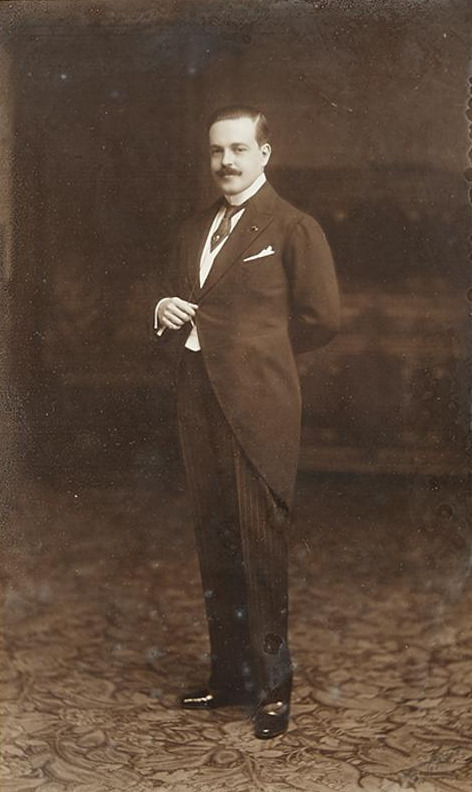
Since 1911, the Portuguese monarchists-in-exile concentrated in Galicia, Spain in order to enter Portugal and restore the monarchy but without the tacit approval of the Spanish government. The monarchists were led by the charismatic Henrique Mitchell de Paiva Couceiro, a veteran of the African colonial campaigns. The Paladin, as the Portuguese newspapers called him, believed that demonstrating a show of force would force the rural people to rise-up and support the restoration. But he was wrong; poorly prepared and badly financed, his forces encountered apathy from the rural population and the incursions ended with retreats into Galicia.
For his part, Manuel supported these incursions the best way he could, but his financial resources were limited. He also faced a group of monarchists who were not clear supporters of his claim to the throne: one attack was made under a blue and white flag, but without the crown, while Paiva Couceiro himself declared at one time that his movement was "neutral" and wanted a plebiscite on the form of the new regime. It was only after he traded correspondence with Couceiro that the King was able to support the Galician monarchists, who had promised to support the 1826 Constitution. The second incursion, in 1912, although better prepared did not succeed because the Spanish government was forced to cede to Republican diplomats the illegality of monarchist encampments in Galicia and disarmed the remaining combatants within its territory. Manuel was never able to restore his kingdom by force and always defended that the monarchists should organize internally in order to reach power legally (by elections). This was not accepted by militant monarchists who, in the following years, continued their badly prepared attempts to restore the monarchy (for example on 20 October 1914), creating anarchy in the streets. His preoccupation worsened at the beginning of the Great War: Manuel was fearful that the United Kingdom would ally with Spain, in light of Portugal's instability, and that Spain would want to annex Portugal, as the price for Spain's entry into the War.
After the failure of the first monarchist incursion, and with Manuel appearing relatively unenthusiastic for a restoration of the monarchy (and entirely against armed counter-revolution), another group of royalists attempted to legitimize the claims of the descendants of Miguel I to the throne. In order to counter this, the King entered into direct negotiations with the Duke of Bragança's representatives: he attempted to establish himself as the rightful king and, according to the Integralismo Lusitano group, he recognized the descendants of Miguel as being in line to the throne of Portugal. In fact, there was an encounter between Manuel II and Miguel
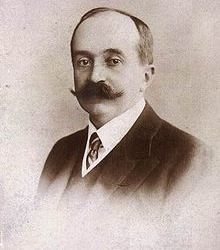
in Dover on 30 January 1912, where both exchanged protocols. The results of this meeting remain controversial: although there was an accord on challenging the republic, there remained no clear agreement on hereditary lines of succession, and Manuel still retained his claim to the throne.

Some monarchists continued unsuccessful counter-revolutionary activities during the War, while the former King continued to condemn their actions and to exhort them to restore the monarchy at the ballot-box. This option seemed viable after the dictatorship of General Pimenta de Castro (January 1915) broke the momentum of the Democratic Party, who attempted to garner sympathies from the conservative right, by removing restrictions imposed on monarchist groups on 5 October. Between April and May 1915, 55 monarchist centres opened (33 in the north and 12 in the centre of the country), causing many republicans to close ranks and on 14 May 1915 the revolution returned to the streets, when 15,000 armed civilians and the soldiers from the Navy tried to maintain the loyalty of the Army to the government. After three days of combat 500 deaths and more than 1,000 wounded, the Democratic Party retained control and the monarchist groups were once again declared illegal. During the Sidónio Pais government, Pais cultivated support from conservative factions and incorporated a re-establishment of a regime based on universal male suffrage. His assassination allowed moderate republicans to re-establish control, but the creation of military juntas in the provinces of the north, with monarchist tendencies, created expectations of a possible monarchist restoration through a military coup d'état.
Manuel continued to plead for calm at the end of the War; while not abandoning the possibility of taking action in the future, he insisted on waiting to the end of peace negotiations in Paris: he was fearful that continued anarchy in Portugal would prejudice its negotiating position. But, for Paiva Couceiro and the other Integralists, this was the moment: they awaited the royal authorization of the King's adjunct Aires de Ornelas. Receiving a memorandum that requested this authorization, and convinced that this action would not occur immediately, Ornelas wrote on the margin, Go on. Palavras de El-Rei, and signed the document. On 19 January 1919 a thousand soldiers and some artillery, under the command of Paiva Couceiro occupied Porto, in order to restore the Constitutional Monarchy, and its King Manuel II. A provisional government was established that controlled Minho, Trás-os-Montes (with the exception of Chaves, Mirandela and Vila Real), as well as part of the district of Aveiro, but contrary to Couceiro's expectations, the rest of the country did not rise.
In Lisbon, Aires de Ornelas was caught completely by surprise, but he could not escape with other monarchists to the safety of the 2nd Regimental Lancers, in Ajuda. There the number of refugees, who suffered as the republican reprisals increased, and the commander removed his forces and those civilians, marching them to Monsanto, where the 4th, 7th and 9th Cavalry and the 30th Infantry Battery from Belém were entrenched. Aires de Ornelas wavered in his support, which risked the possibility that Integralists would transfer their loyalty to Miguel's supporters, or assume the leadership of the monarchist movement. In a small area, and circled by Republican forces, the monarchists surrendered on 24 January. With the failure of the Restoration in the center and south of the country, luck turned on Paiva Couceiro. On 13 February a part of the Republican National Guard deserted and restored the Republic in Porto. Those monarchists who did not escape were incarcerated and subsequently sentenced to long-term imprisonment. The King, in exile, did not hear of the failure and was informed only after reading the reports in the newspapers.
Although it is not likely that such a pact took place, it is said that in 1922, with cooling of relations between monarchists, Integralismo Lusitano and the King, and mindful that his marriage to Augusta Victória had not produced heirs, Manuel, in a Paris meeting in April 1922, represented by his adjunct Aires de Ornelas, and Miguelist representatives Infanta Adelgundes, who was by now calling herself Duchess of Guimarães, and tutor to Duarte Nuno, agreed that owing to an heir, the rights of succession would pass to Duarte Nuno. Integralists disagreed because in their view the agreement failed to make reference to the reestablishment of a traditional monarchy, which was fundamental to their assertions. Integralismo Lusitano withheld their support, and on September 1925, Aldegundes in a letter to Manuel, repudiated the agreement owing the continue operation of the Constitutional Newspaper (the Integralist paper was closed as part of the accord) and the lack of Integralist participation.

Manuel was always an avid reader and, during his exile, dedicated himself to the study of literature, penning treatises on Medieval and Renaissance literature in Portugal. Following the First World War and with more free time, apart from his contacts with monarchist organizations, he dedicated himself to these studies (a tradition that was instilled in him by his father). Initially, he was interested in writing a biography, and began research on a biography of Manuel I of Portugal,

who he believed was badly treated by other historians. He contracted the services of the bibliographer Maurice Ettinghausen in 1919, to find older books for his project, and was helped by the dissolution of many private collections after the implementation of the Republic.
By 1926, Manuel had abandoned the idea of a biography and concentrated on descriptions of older books in his library (itself, a complete library of older works). More than a simple list, the work allowed Manuel to write of the glories of Portugal, writing not just a bibliography but also an examination of the authors and the context of their writings. His interpretation was scientifically rigorous, and resulted in a final work that was marked by a nationalism and the exaltation of ancestral valor. His examples were limited and illustrated by facsimiled copies of the works, both written in English and Portuguese. The first volume of the work Livros Antigos Portuguezes 1489–1600, da Bibliotheca de Sua Magestade Fidelíssima Descriptos por S. M. El-Rey D. Manuel em Três volumes was published in 1929. Manuel delivered, by hand, a copy of his work to his friend George V at Windsor Castle. The work was received well by critics, and the King dedicated himself to the second volume, which covered the period 1540 to 1569. But the project was terminated prematurely in 1932, when Manuel died unexpectedly: the third volume was posthumously published under the supervision of his librarian, Margery Winters. His completed works gave the King a respectful reputation among Portuguese historians, and his bust was added to the entrance atrium of the National Library in Lisbon.

Manuel died unexpectedly in his residence on 2 July 1932, via suffocation by an abnormal swelling in the vocal folds of his larynx, or tracheal oedema. The Portuguese government, at that time led by António Oliveira de Salazar, authorized his burial in Lisbon, after a state funeral. His body arrived in Lisbon on 2 August 1932, on board the British cruiser HMS Concord
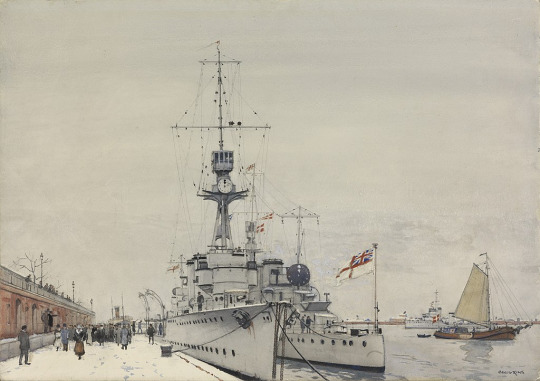
which had made the journey from the United Kingdom and sailed into the Tagus River to deliver the coffin of the former King. The body was received at Praça do Comércio, where a crowd of people had gathered to follow the coffin to São Vicente de Fora and the roads were inundated with people interested in seeing the funeral procession. His body was interred in the Royal Pantheon of the House of Bragança in the Monastery of São Vicente de Fora.

By some he was given the nickname O Patriota ('The Patriot'), for his preoccupation with the national identity; O Desventurado ('The Unfortunate'), because he lost his throne to the Republic; and O Estudioso or O Bibliófilo ('The Studious' or 'The Bibliophile') for his love for Portuguese literature. Monarchists also referred to him as O Rei-Saudade ('The Missed King'), for the longing that was felt when the monarchy was abolished.
His death has been regarded as suspicious by some because of the fact that he had been playing tennis on 1 July and was apparently in excellent health. An incident surrounding his sudden death was mentioned in the autobiography of Harold Brust, a member of Scotland Yard Special Branch in charge of protecting public figures. In his memoirs, Brust speaks of an incident which probably occurred in 1931 in which an intruder was discovered in the grounds of Fulwell Park who, when arrested, the Police confirmed as being a prominent member of a Portuguese republican terrorist group known as the Carbonária and who was subsequently deported to Lisbon. To date the identity of the intruder has not been confirmed. Questions remain as to the reason for the man's intrusion.
Since both the Dover and Paris Pacts did not resolve the issue of succession and there are no known documents proving them, there was no direct heir to the defunct throne. Manuel also made it clear that the branches of the Portuguese royal family (including the Imperial family of Brazil, the Bragança-Orleans, and the descendants of the Duke of Loulé) ended with the last direct male heir to the House of Bragança. Still, the monarchist Integralismo Lusitano movement acclaimed Duarte Nuno, Duke of Bragança
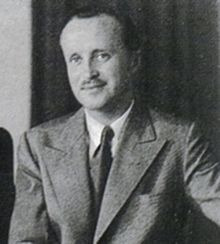
as King of Portugal, since Miguel I of Portugal, on the death of his grandchild, was head of the Portuguese Royal Family. Their justification, ironically, included the fact that both branches had met to determine the line of succession in Dover and Paris, even though those accords were both later repudiated.
After King Manuel's death, the dictator António de Oliveira Salazar authorized the return of the banned branch of the Braganças (ex-King Miguel's descendants) and founded, with the sale of the King's English estate and some of his remaining personal possessions, the Foundation of the House of Bragança, according to King Manuel's desire to leave his personal fortune to the Portuguese people.
7 notes
·
View notes
Photo

Enquanto estamos em casa - e porque hoje é Dia Mundial do Teatro - relembramos coisas boas #14: .. "O lugar por onde a vaca passou", a partir de Prometeu (Rascunhos e Agrilhoado), de Ésquilo Teatro Griot / Encenação: João Fiadeiro 2016 .. #olugarporondeavacapassou #teatrogriot #joaofiadeiro #fotografiadecena #teatrodobairro #ésquilo #prometeuagrilhoado #prometheusbound #aeschylus #imagerie12anos #imagerie20082020 #imagerie #imageriecasadeimagens #magdaedomingos #coisasboastodososdias #enquantoestamosemcasa #diariosdaquarentena #makearteveryday https://www.instagram.com/p/B-PmzoRJXSL/?igshid=1mnrqe65swkg8
#14#olugarporondeavacapassou#teatrogriot#joaofiadeiro#fotografiadecena#teatrodobairro#ésquilo#prometeuagrilhoado#prometheusbound#aeschylus#imagerie12anos#imagerie20082020#imagerie#imageriecasadeimagens#magdaedomingos#coisasboastodososdias#enquantoestamosemcasa#diariosdaquarentena#makearteveryday
1 note
·
View note
Photo
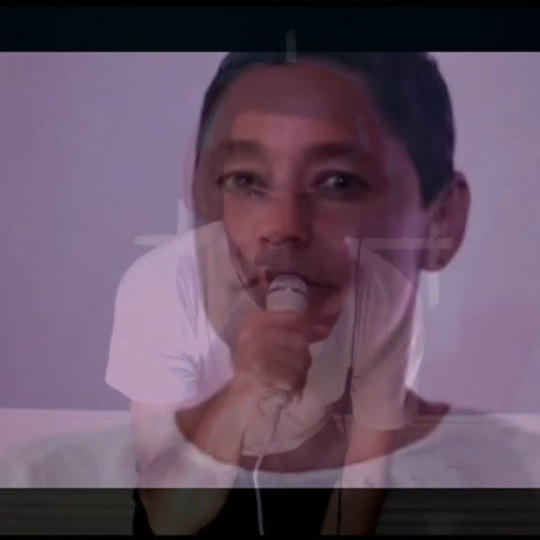

_______________nosespaçosescrevemosonossocorpo
Concept: Lisa Parra and Daniel Pinheiro / LAND Project
Performers: Lisa Parra and Daniel Pinheiro
Video and projector design: Kathryn Butler
Livestream tool: Livelab
Performance Mix 35, LAND Project connected remotely to construct a shared space using João Fiadeiro real-time composition practice. Lisa was live in New York, while Daniel was projected from Porto and live streamed using CultureHub’s LiveLab The actions that take place between us were a hybrid of virtual and live real time performance where Movement Research’s courtyard studio space was transformed by the invisible and visible presence of the other that created a togetherness stream of consciousness.
New Dance Alliance, Performance Mix 35, June 10, 2021
0 notes
Photo





Gesto sobre papel
“(…) Cada gesto que fazemos, cada palavra que dizemos, implica não fazer e não dizer quantos gestos e palavras possíveis? Quantas pessoas poderíamos nós ter sido? Não será exactamente aí, no momento anterior ao gesto e à palavra, no “antes”, que se joga a nossa existência? (…) Não será na decisão de qual o gesto e de qual palavra a fazer ou a dizer que se concentra toda a nossa “pessoa”? Não será exactamente no equilíbrio diário entre quem poderemos vir a ser e quem nos tornamos que define e baliza a nossa relação com os que nos rodeiam, a criação da nossa personalidade e a interferência que, quer queiramos ou não, provocamos no mundo?” – João Fiadeiro
Gesto sobre papel é uma performance duracional onde se imprimem no papel gestos que se vão gerando. Quais são os gestos que me habitam? Qual o léxico que tenho disponível para para utilizar? Posso sistematizá-los para me auxiliarem a comunicação? Eu sou os meu gestos? // Os gestos vão sendo procurados no decorrer da performance e geram-se a partir da memória ou de movimentos que os provocam. Gestos quotidianos e “gestos imaginados”, vão invadindo as folhas de papel e sobrepondo-se até sentir que os esgotei. O gesto é o material desta acção. // Gesto sobre parede é outra versão deste trabalho em que os gestos são marcados directamente nos limites físicos de um espaço. Os gestos começam a habitar os locais e já não são recolhidos no final da performance.
Gesto sobre papel @ worshop Re:Re: arranjar, com Rita Castro Neves e Joclécio Azevedo, Faculdade de Belas Artes da Universidade do Porto, Maio 2017. Fotografia 1 Rita Castro Neves.
Gesto sobre papel @ Serralves em Festa, Fundação de Serralves, Porto, Junho 2017. Fotografia 2+3 Bruna Prazeres, fotografia 4 Rebecca Moradalizadeh.
Gesto sobre parede @ Kadela Andalusa Festival, Évora, 2017. Fotografia 5.
+
@ Espaço Campanhã, Porto, 2017.
@ Galeria Zaratan, Lisboa, 2018.
0 notes
Photo




ECR_S04_E02 > ARTISTAS > ÁNGELA MILLANO & JULIÁN PACOMIO + CARMEN MAIN & ELENA JUÁREZ
ÁNGELA MILLANO
Coreógrafa y performer, su trabajo escénico se articula en torno al cuerpo, sus posibilidades y sus discursos, así como el modo en el que es comprendido, catalogado, manejado y legislado en nuestra sociedad. Entre sus últimas performances se encuentran los solos Hogar (2017) y Nunca llevo falda porque no sé cruzar las piernas (2016). Desde 2018 trabaja con el artista Pablo Fidalgo en Anarquismos (Por el medio de la habitación corre un río más claro)
Colabora desde 2017 con Julián Pacomio en el proyecto de investigación Asleep Images del que forma parte las performances PSYCHO y Make It, Don’t Fake it (2019)
JULIÁN PACOMIO
Artista y performer, sus trabajos escénicos indagan en la idea de copia, remake, traducción y apropiación de materiales ajenos: El mundo bajo el mundo (2017), Espacio Hacedor (2016) en colaboración con el arquitecto Miguel del Amo, y My Turin Horse (2012). Desde 2016 forma parte del colectivo de artes vivas Bullshit, además de colaborar con los coreógrafos João Fiadeiro en From afar it was in Island, From close up, a stone y What to do with what remains, Luis Garay en Oro Lodo, y Annika Pannitto en The Third Table.
Colabora desde 2017 con Ángela Milano en el proyecto de investigación Asleep Images del que forma parte las performances PSYCHO y Make It, Don’t Fake it (2019)
CARMEN MAIN
En la actualidad, compagina su práctica artística con la docencia de animación experimental en centros como Matadero o Master LAV (Máster de Creación y Práctica Audiovisual Contemporánea).
Licenciada en Bellas Artes por la Universidad Complutense de Madrid, se gradúa en las especialidades de Pintura y Audiovisuales. Paralelamente, realiza varias residenciasartísticas y seminarios con diversos cineastas. En 2017, disfruta de una beca para el Máster de Creación y Práctica Audiovisual Contemporánea, Master LAV, donde sentarálas bases de su actual investigación. Participa y comisaría diversas exposiciones en la London Newcastle Gallery, el Marchè aux Puces de Marsella o laGalería Espositivo en Madrid. Sus últimas piezas, Still Life #01 y Still Life #02, han podido verse en festivales como Filmadrid, en el FIJR de Granada (mención especial al premio Val del Omar), en el Festival Internacional de cine de Valdivia (Chile), o en FICUNAM (México).
Entre los formatos que trabaja se encuentran la película, el video, la animación, la escultura y la instalación, interesándose por la hibridación de prácticas clásicas con nuevos medios, la revisitación del archivo y la idea de cine expandido.
ELENA JUÁREZ
Artista visual y new media con base en Madrid. Desarrolla vídeo, gráficos interactivos y generativos e instalaciones multimedia en colaboración con otros artistas e instituciones culturales. Su práctica está destinada a una especial motivación en “iluminar espacios oscuros” por eso su trabajo se vincula principalmente a las artes escénicas y a productores de música electrónica. En sus intervenciones, destacan las composiciones geométricas y las narrativas abstractas en las que el sonido está íntimamente relacionado con los parámetros programados a través de la creación en vivo. Además de su amplia trayectoria como artista digital es docente de tecnología e interactividad en el IED de Madrid y ha impartido charlas y talleres en diferentes espacios e instituciones como Medialab-Prado, Fundación Telefónica y La Casa Encendida.
Foto Carmen Main © Aruallan.
Foto Elena Juárez © Sol Salama.
#Artistas#El cine revelado#ca2m#Playtime Audiovisuales#Ángela Millano#Julián Pacomio#Carmen Main#Elena Juárez#Make It Don't Fake It#Vanitas#2020
0 notes
Photo


SEE THAT MY GRAVE IS KEPT CLEAN
by Adaline Anobile
A print by Albrecht Dürer dating back to the Renaissance depicts a strange scene: a naked woman is lying on a table behind a grid; facing her on the other side, a man tries to reproduce what he sees, using the grid as a reference system to measure, to pinpoint, to see. Even if the figure of the woman is captured by this device, called a perspective machine, it will never be entirely contained. The grid cannot capture her depth or thoughts. In See that my grave is kept clean, the three figures in the print – the naked woman, the observer and the grid – are transposed to the stage.
Technical Sheet
Concept and performance
Adaline Anobile
Artistic collaborator
Carolina Campos Cenário
Set design
Pauline Brun
Light design
Leticia Skrycky
Artistic guidance
Myrto Katsiki
Co-production
Landslide, far° festival des arts vivants Nyon no contexto do programa Extra Time
Support
Loterie Romande
Fondation suisse des artistes interprètes SIS
Partners
Workspacebrussels
Honolulu Nantes
BUDA Courtrai
La Caldera Barcelona
Atelier REAL
Théâtre Saint-Gervais Genève



Bio Adaline Anobile was born in Switzerland. She completed a Masters in Textile Design at La Cambre Visual Arts School in Brussels (BE) before pursuing her research in dance. In 2015, she completed her Master’s degree in Choreography at ex.e.r.ce / National Choreographic Center in Montpellier (FR). Her interest in philosophy, somatic practices, martial arts and voice have influenced the development of her work. Moving between fields, formats and techniques, her work develops in the midst of things: matter, words, bodies and concepts contaminate each other in multi-textured realities that defy hierarchy and domestication. In an attempt to grasp these foreign yet intimate spaces, her process questions systems. Drifting between the systematic and the sensual, her work experiments with shifts in perception. Her latest works include À 10CM PRÈS co-written with Julie Gouju (2018); NOIR APPARENT co-written with Rudy Decelière (2014); as well as a series of short solo performances ALINEA (2016), ABBATIALE DE BELLELAY (2012) and RUNNING (2010). As a performer, she has lately been working with João Fiadeiro, Laurent Pichaud and Jule Flierl. She currently lives in Brussels.
0 notes
Text
Rodrigo García, Miguel Borges e Teatro do Vestido na 41.ª edição do Citemor
FOTO DR
O festival Citemor, que decorre de 25 de julho a 17 de agosto, volta a dividir-se entre Coimbra, Figueira da Foz e Montemor-o-Velho, recebendo espetáculos de Rodrigo García, Miguel Borges e Teatro do Vestido.
Na 41.ª edição do “mais antigo festival de teatro do país”, a organização volta a apostar numa distribuição geográfica entre a Figueira da Foz e Coimbra, como tem acontecido nos últimos anos da iniciativa, que, em 2018, voltou a ser contemplada nos apoios bianuais da Direção-Geral das Artes.
O festival arranca a 25 de julho, com apresentações de João Fiadeiro e Miguel Bonneville, em Coimbra, e termina a 17 de agosto com um espetáculo da coreógrafa e bailarina espanhola Rocío Molina, resultado da sua residência criativa em Montemor-o-Velho, depois de ter vindo apresentar a Portugal, a convite do Citemor, “Caída del Cielo”, informou a organização, em comunicado enviado à agência Lusa.
Entre 08 e 10 de agosto, o dramaturgo argentino Rodrigo García apresenta “PS-WAM – Piano Sonatas Wolfgang Amadeus Mozart”, e o ator português Miguel Borges, que trabalhou com o Teatro da Cornucópia e os Artistas Unidos, leva, à Garagem Auto Peninsular da Figueira da Foz, “Conde de Ferreira”, a 01 e 02 de agosto, refere a mesma nota.
Este ano, o Citemor dá continuação ao trabalho que arrancou na edição anterior do Teatro do Vestido, que esteve em residência criativa, com a apresentação, a 15 e 16 de agosto, de “Pontes de Sal”, um espetáculo que aborda o trabalho nas salinas da Figueira da Foz.
O conteúdo Rodrigo García, Miguel Borges e Teatro do Vestido na 41.ª edição do Citemor aparece primeiro em Diário As Beiras.
Rodrigo García, Miguel Borges e Teatro do Vestido na 41.ª edição do Citemor
0 notes
Video
vimeo

studio_practice_archive_1
‘see DoBe’ study. this is a practice of sight/perception to movement translation.
sight: what you visually see. the ‘real’ world.
imagination: what you see in your head. the ‘imaginary’ world.
perception: sight + imagination. vision of real world fabricated with influences of the imaginary. what you see when reality and head space coexist.
this study plays with the space by using two modes of vision; sight and perception. sight is about matching the geometries of the space with your body. initially derived from the question ‘how do i fit in?’, it’s about tracing what you see, syncing the corporeal lines of energy with the architecture’s lines of energy. in a way becoming the space, tethering to it. while perception allows for manipulation of those spacial geometries. the imagination is unlimited. to apply this means you can do anything with the space. it’s about taking geometries and projecting a completely malleable version of it to the space to use as a toy. for me this playful nature of the practice leads to the creation of a g.host playground.
g.host: guest + host. introduced to me by João Fiadeiro, it is the idea of receiving and giving simultaneously with hints of ephemerality. in my application of g.host to this study,, it is the receiving and giving of energy to the space, done SO hard that the presence of the unreal becomes unavoidable as an entity.
the video is of me in a low effort practice of this study with the door. i see the six door hinges, five lines that make up the architecture of the door, and the door handle (which includes the shapes of the keyhole circle, handle, and rectangle that those two are on).
0 notes
Photo
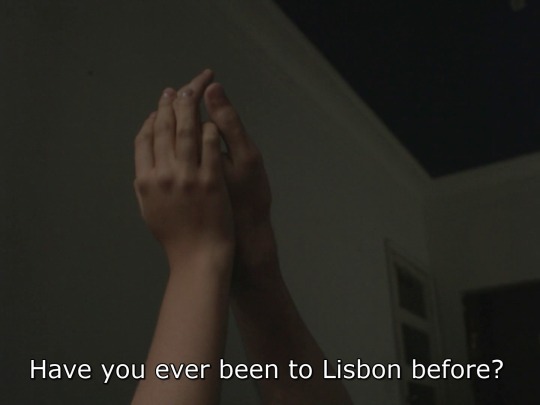



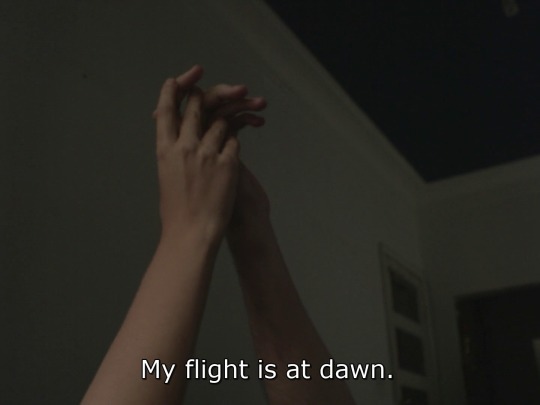
António Um Dois Três [Antonio one two three] (Leonardo Mouramateus - 2017)
#António Um Dois Três#Antonio one two three#2010s cinema#Leonardo Mouramateus#Mauro Soares#Deborah Viegas#Daniel Pizamiglio#João Fiadeiro#cinema of Portugal#Portuguese cinema#Portuguese movies#European movies#European cinema#European society#Lisboa#Lisbon#Lisbona
0 notes
Text
Antoine Vallé
Antoine Vallé vit et travaille en région parisienne. Diplômé de l’École Nationale Supérieure d’Arts de Paris-Cergy en 2016, il développe un travail artistique autour du jeu et des espaces qui lui sont dédiés. Il réfléchit aux notions de vertige et de pantomime à travers ses livres photographiques, ses textes, ses spectacles, ses vidéos et ses environnements (installation). Dans les environnements qu’il pense et construit, seul ou en collaboration, il cherche à provoquer un jeu du regard, où l’œil se déplace, où les mains touchent, où l’attention du spectateur voyage.

Photo credit : Hubert Crabiéres
Depuis le début de l'année 2018, il paraît dans la revue Journal #2, une revue créé et performée par Matthieu Blond. Il installe de nombreuses sculptures (mobiles) dans l'Yonne, en Haut-Loire et dans l'Indre-et-Loire. Il présente son nouveau spectacle Les Grappes en Touraine au festival Intergalactique. Les Grappes est un duo en collaboration avec Théo Hillion.
En 2017, il conçoit Faux Philodendron, un spectacle qui questionne l'idée d'in situ, dans lequel quatre danseurs et lui performent, avec comme matériaux : dix fausses feuilles de monstera deliciosa. Ces accessoires proviennent d’un mobile de deux mètres par trois précédemment réalisé par l’artiste. Ce court spectacle a été représenté aux Rendez-Vous Aux Jardins d’Auvers-sur-Oise, au Camping du CND et aux Grands Voisins dans le cadre de l’exposition Viens, Mais Ne Viens Pas Quand Je Serai Seule. Cette même année a donné lieu à de fructueuses collaborations tels que L’Observatoire, un habitat sur pilotis construit en collaboration avec Tiffanie Pichon et placé au centre d’un étang, lors du Malstörm Lab4 de Mettray, ou encore Chaque Jour On A Passé La Journée Ensemble, un environnement jardin élaboré en collaboration avec Do Eom, Woosung Sohn et Tiffanie Pichon, aux Grands Voisins. Deux de ses court-métrages : Live et Lectures Marseille, ont été projetés dans la programmation estivale d'Écran Voisin.
Il fabrique en 2016 un environnement nomade nommé Sortir De La Maison, d’abord installé à l’ENSAPC, puis aux Grands Voisins, il se trouve désormais à Chablis (89), dans le Jardin Partagé de René et Madeleine Dauvissat.
En 2015, Antoine Vallé écrit et auto-édite le livre Robert Gros-Doigts qui partage par le biais d’une personne fictive la découverte de différent penseurs et créateurs d’aires de jeux, et les diverses manières dont ces espaces ont été pensés jusqu’à aujourd’hui. Il s’articule entre un récit et des photographies de certains de ces endroits merveilleux. Cet ouvrage se termine par une bande dessinée muette où Robert Gros-Doigt décide de construire son aire de jeux rêvée, dans un terrain vague, puis à l’échelle d’un paysage. Cette BD est suivie d’un texte qui tente de raconter la même histoire.
Tout au long de son cursus, il développe une pratique cinématographique fondée sur le montage d’images de voyages. Lorsqu’il filme, il observe et glane des comportements à l’intérieur d’endroits à la fois délimités et poreux (parc, île, plage, train cabanes). Avec ces matériaux (image, son), il dresse le tableau singulier d’un lieu que des personnes partagent dans un temps commun. Dans ses films, il affirme la présence du caméraman, comme un personnage qui partage sa vision.
Sa pratique a été nourrie par de nombreux workshops, notamment ceux donnés par João Fiadeiro, Alain Michard, Xavier Le Roy, Laurent Pichaud, Mathieu Bouvier, Loïc Touzé, Bertwin D’souza, Latifa Laâbissi, Fanny de Chaillé, Jennifer Lassey, Emmanuelle Lainé et Nora Philippe.
0 notes
Video
vimeo
SECALHARIDADE - MAYHAPNESS from AND_Lab on Vimeo.
Conferência-performance de João Fiadeiro e Fernanda Eugénio
Lecture-performance by João Fiadeiro and Fernanda Eugénio.
SECALHARIDADE
Estreia_ Culturgest, Lisboa, 1, 2 e 3 de Junho de 2012
Direção, criação e interpretação JOÃO FIADEIRO E FERNANDA EUGÉNIO
Desenho de luz THOMAS WALGRAVE
Desenho de som JOÃO BENTO
Fotografias percursos PATRÍCIA ALMEIDA
Multimédia GUILHERME MARTINS
E ANDRÉ ALMEIDA (ARTICA.CC)
Produção e direção de cena DAVID DOS SANTOS
Tradução de textos PAULA CASPÃO
Assistente de ensaio DANIEL PIZAMIGLIO
Documentação vídeo PEDRO FILIPE MARQUES
Fotografias de divulgação CAROLINA CAMPOS
Tradução de textos de divulgação INÊS D’ALMEY
Website JACOPO GUIDALI
Gestão Financeira e contabilidade SÍLVIA GUERRA
Carpintaria JÚLIO BRAGADO
Sinalética percursos PLÁSTICOS DO CAMPO GRANDE (JOÃO RIBEIRO)
Residência artística ATELIER RE.AL E O ESPAÇO DO TEMPO
Produção RE.AL Coprodução CULTURGEST Parceria ALKANTARA FESTIVAL
A RE.AL é uma estrutura financiada pelo Governo de Portugal / Secretário de Estado da Cultura / Direção Geral das Artes e tem o apoio da Câmara Municipal de Lisboa e da Fundação Gulbenkian.
Gostaríamos de agradecer a todos os participantes do curso Handling_Tools/AND_ Lab que, de uma maneira ou de outra, contribuíram para a clarificação e o desenho dos conteúdos gerados para este trabalho. Agradecimentos especiais a Carlos Oliveira, Liliana Coutinho e Sílvia Pinto Coelho; e a Paulo Prata Ramos e a Rui Horta (e equipa do Espaço do Tempo) pela forma como nos acolheram.
Duração 1 hora e 30 minutos Classificação etária para todas as idades Público-alvo geral
----------------------------------------------------------------------------------------------------------------------------------------------------------
MAYHAPNESS
Première_ Culturgest, Lisbon, 1, 2 and 3 June 2012
Direction, creation and interpretation João Fiadeiro and FERNANDA EUGENIO
Light design Thomas Walgrave
Sound Design JOÃO BENTO
Pathways photos PATRÍCIA ALMEIDA
Multimedia GUILHERME MARTINS
E ANDRÉ ALMEIDA (ARTICA.CC)
Production and scene direction DAVID DOS SANTOS
Translation of texts PAULA CASPÃO
Rehearsal assistant DANIEL PIZAMIGLIO
Video documentation PEDRO FILIPE MARQUES
Disclosure photos CAROLINA CAMPOS
Translation of disclosure texts INÊS D’ALMEY
Website JACOPO GUIDALI
Financial Management and Accounting SÍLVIA GUERRA
Carpentry JÚLIO BRAGADO
Signage pathways PLÁSTICOS DO CAMPO GRANDE (JOÃO RIBEIRO)
Artist residency ATELIER RE.AL and O ESPAÇO DO TEMPO
Production RE.AL Coproduction CULTURGEST Partnership ALKANTARA FESTIVAL
The RE.AL is a structure funded by the Government of Portugal / Secretary of State for Culture / General Directorate of Arts and has the support of the Municipality of Lisbon and the Gulbenkian Foundation.
We would like to thank all participants of the course hANDling_tools / AND_Lab that, one way or another contributed to the clarification of the generated content and design for this work. Special thanks to Carlos Oliveira, Liliana Coutinho and Sílvia Pinto Coelho; Paulo Prata Ramos and Rui Horta (and the team of Espaço do Tempo) by how they hosted us.
Duration 1 hour and 30 minutes Age Rating for all ages General Audience
0 notes
